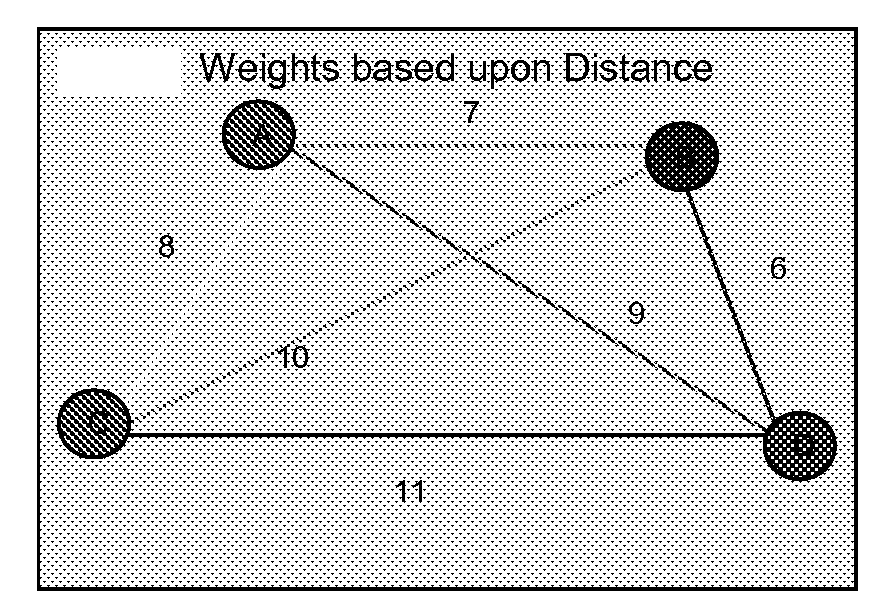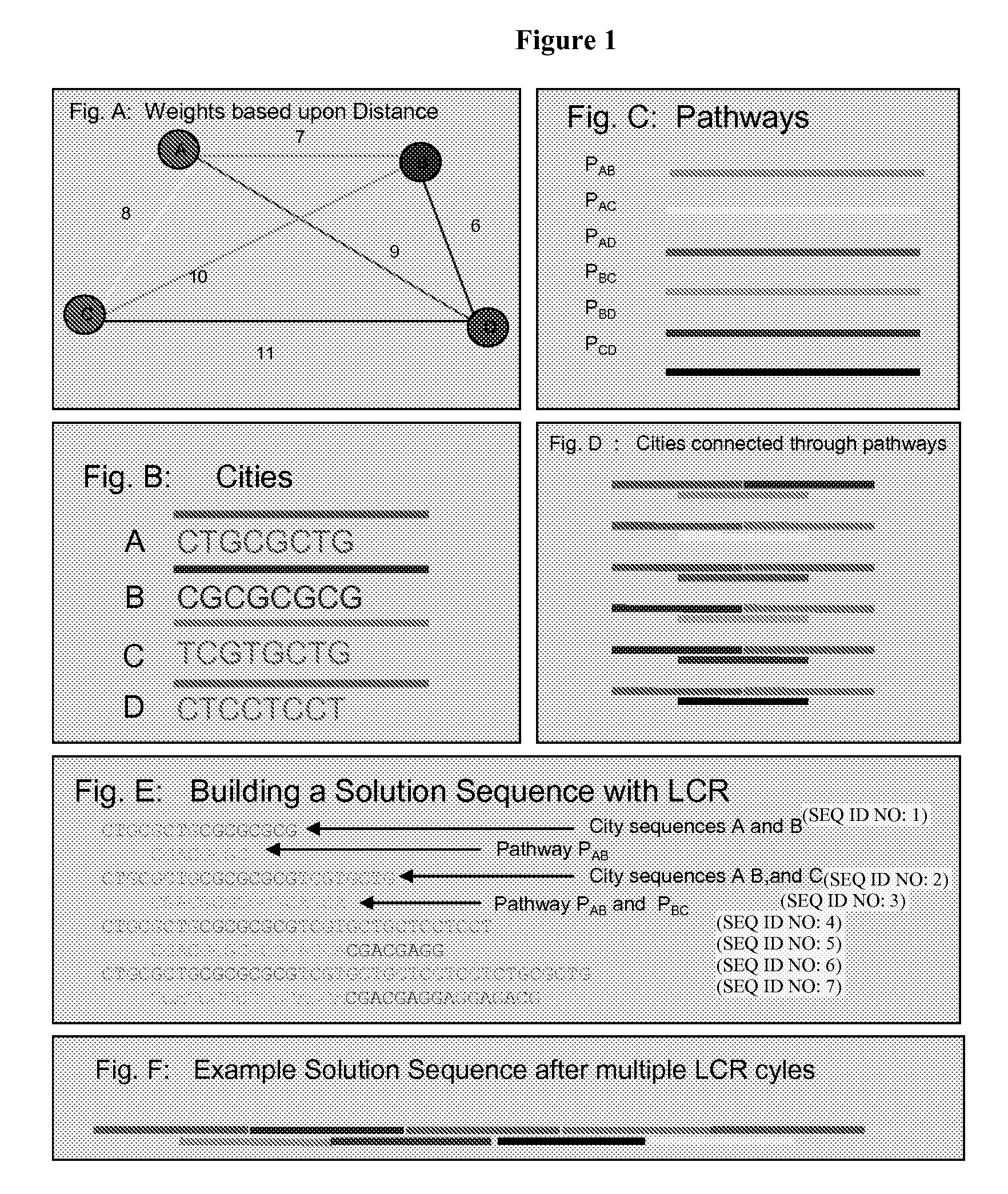Methods for generating a distribution of optimal solutions to nondeterministic polynomial optimization problems
a nondeterministic polynomial optimization and optimal solution technology, applied in the field of methods for generating optimal solutions to nondeterministic polynomial optimization problems, can solve the problems of difficult computing of “np optimization problems” of any complexity, and achieve the effect of reducing distan
- Summary
- Abstract
- Description
- Claims
- Application Information
AI Technical Summary
Benefits of technology
Problems solved by technology
Method used
Image
Examples
example 1
General Methodology to Solve the Traveling Salesman Problem
[0123]Step 1: Create a Set of Unique DNA Sequences for Each City (“Input Polynucleotides” or “City Sequences”) and for Each Path that Connects Cities (“Connection Polynucleotides” or “Pathway Sequences”)
[0124]In this example, 20 base pair nucleotides that correspond to each vertex (city) in the graph (city sequences) are prepared (FIGS. 1A and 1B). FIG. 1 corresponds to a 4 city problem for the purpose of illustration of the concept. Additionally, 20-mer sequences are created to represent the edges (pathway sequences) in the graph (FIG. 1C). If two city sequences, A and B, are composed of two 10-mer sequences x1y1 and x2y2 (ie: each of the “x” and “y” portions are 10 nucleotides in length), then an edge or path, PAB, from A to B is a 20-mer composed of the Watson-Crick complement of y1 and x2 (y1x2). Thus, when put in solution, the path sequence binds to the second half of the source city and the first half of the destinatio...
example 2
Application of the General Method
[0130]A set of 10 unique 20-mer city sequences (input polynucleotides) was designed to represent each city and synthesized by Invitrogen Corporation. An additional 90 pathway sequences (connection polynucleotides) were synthesized containing all possible combinations of the complementary sequences to join any two city sequences together. The polynucleotide sequences were designed to minimize cross hybridization, self-assembly and secondary structure formation and retain very similar thermal properties (melting temperature, in range of 61.3 to 61.8° C.) and GC content (25-30%). However, we used start and end city sequences with an additional “GC cap” (string of G or C residues) that raised the PCR™ of these sequences to 68-72° C. to further minimize secondary structure formation and inappropriate insertion of the staring and / or ending city sequence into the middle of the solution.
[0131]The yields of the synthesis for the DNA oligos were used to determ...
example 3
Solving a 15 City Traveling Salesman Problem
[0154]In this example, manageable amounts of DNA are used to solve a 15-city asymmetric traveling salesman problem (TSP), the largest problem solved by molecular computing to date. As discussed above, the TSP is to find the optimal path between all desired cities, starting and ending at the same city and visiting each city once and only once. The methods herein exploit the truly random molecular process of Brownian motion inherent in molecular interactions to generate an optimal subset of answers. A similar process is not possible using in silico computers since truly random samples cannot be generated by deterministic circuits.
[0155]Concentration control was used to implement a probabilistic computation to identify the optimal path for a fully random, connected, asymmetric 15-city TSP. When concentration of the pathway DNA is used to encode optimality, the answer population is symmetrically distributed where the mode and mean correspond t...
PUM
| Property | Measurement | Unit |
|---|---|---|
| Concentration | aaaaa | aaaaa |
| Length | aaaaa | aaaaa |
| Distance | aaaaa | aaaaa |
Abstract
Description
Claims
Application Information
 Login to View More
Login to View More - R&D
- Intellectual Property
- Life Sciences
- Materials
- Tech Scout
- Unparalleled Data Quality
- Higher Quality Content
- 60% Fewer Hallucinations
Browse by: Latest US Patents, China's latest patents, Technical Efficacy Thesaurus, Application Domain, Technology Topic, Popular Technical Reports.
© 2025 PatSnap. All rights reserved.Legal|Privacy policy|Modern Slavery Act Transparency Statement|Sitemap|About US| Contact US: help@patsnap.com



